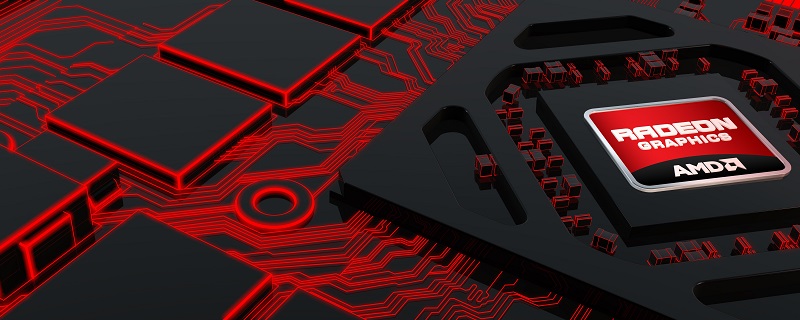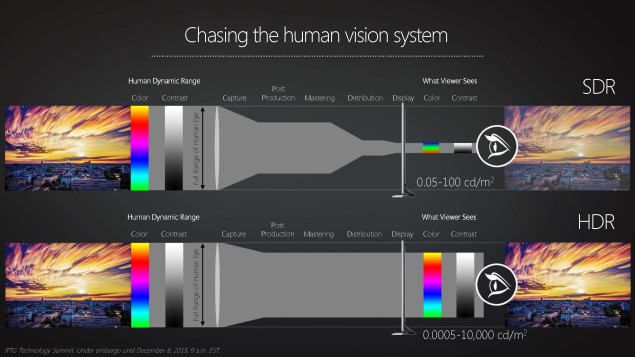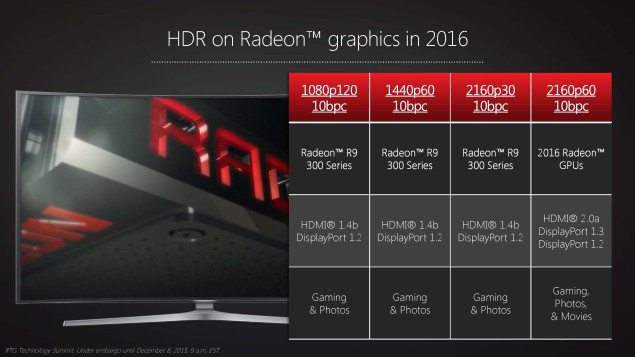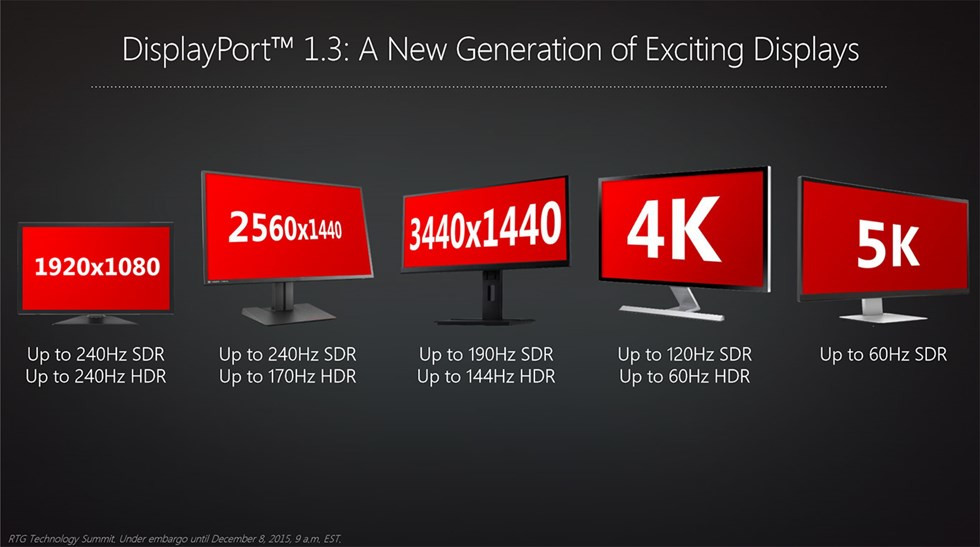Radeon Technologies Group Demos HDR at CES
Radeon Technologies Group Demos HDR at CES
Â
AMD is making to their GPUs is that they plan on implementing High Dynamic Range (HDR) support on their current and next generation AMD Radeon GPUs, allowing AMD Radeon GPUs to support higher than 10-bit displays Allowing AMD GPUs to support up to 32-bit colour, which has full 16.7 million colours compared to 1.07 million colours with 10-bit colour. Â
This will give AMD GPUS the ability to deliver deeper and more varied colours and give consumers a much better visual experience.Â
Â
      AMD and the Radeon Technologies Group are dedicated to delivering gamers and cinema enthusiasts a better picture through HDR Graphics. See the difference between Standard Dynamic Range and High Dynamic Range in this real-time demo.
Â
Â
This upgrade in both colour quality and contrast will enable images to look much more life like on HDR monitors, so much so that AMD claim that 1080p HDR content will look better than standard dynamic range (SDR) 4K content.Â
AMD also say that they are working with game developers to get HDR content into future games.Â
Â
Â
DSR is supported in AMD’s R9 300 series of GPUs or newer and will be able to be used on existing HDMI 1.4B or DisplayPort 1.2 cables, though sadly DSR at 4K 60Hz will be limited to only AMD’s upcoming 2016 lineup of GPUs due to cable bandwidth limitations.Â
Right now Nvidia has not announced support for HDR.Â
Â
Â
HDR content will be placing a lot more load onto display interfaces, as all the extra colour and contrast data will need to be transmitted to the display, which will mean the we will need a higher bandwidth connector for future HDR displays in order to run these displays at a high framerate. This is where DisplayPort 1.3 comes in, offering over 80% more bandwidth than HDMI 2.0Â
Â
Â
Using this new display interface will also allow monitors to be pushed to higher refresh rates than ever before, allowing 1440p monitors to be pushed at up to 240Hz in SDR or 170Hz in HDR, or 4K at up to 120Hz in SDR.Â
With the next generation of GPUs being expected to give us a massive increase in performance having displays which are capable of ever higher refresh rates will be a must for many high end gamers. Personally I am looking forward to seeing a LFC compatible FreeSync 120Hz 4K monitor.Â
Â
You can join the discussion on HDR on AMD GPUs on the OC3D Forums.Â
Â
AMD’s Radeon Technologies Group has Demoed HDR (High Dynamic Range) on their GPUs at CES. https://t.co/h8dsJsJbqb pic.twitter.com/vyUeRBwPun
— OC3D (@OC3D) January 8, 2016






